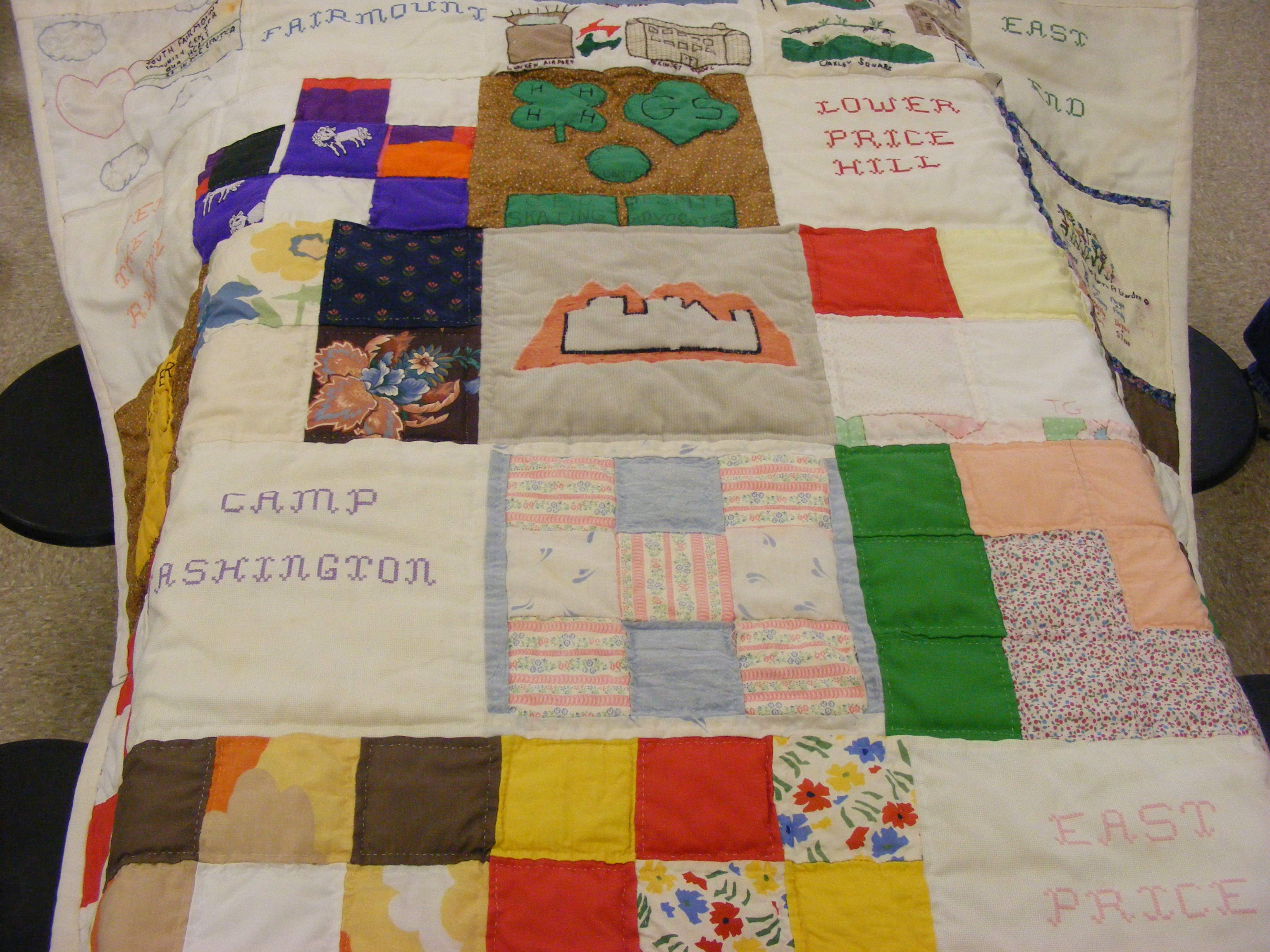by Jonathan L. Bradshaw
Urban Appalachians are deeply woven (or quilted) into the fabric of Cincinnati. While many might know of Appalachians’ contributions to folk music and literary arts, there is also a long tradition of urban Appalachian advocacy work and civic engagement in the city.
The urban Appalachian story in Cincinnati is about advocates and artists who have transformed city discourses around issues that directly affect them and their neighbors. Appalachian migrants arriving in Cincinnati in great numbers during the 1940s-1970s were often either dismissed or treated as social problems in city discourses about policy and services. Some of those characterizations relied on old stereotypes of Appalachians as individualistic, isolated, and habitually disengaged from political engagement. However, urban Appalachians in Cincinnati were—and have continued to be—deeply involved in shaping the civic contexts of Cincinnati. While some argued Appalachian migrants should easily assimilate and leave off their connections to the mountains, early community advocates took the other route and used that heritage as a pathway for rooting deeply and motivating civic engagement in the city.
For those of you interested in tapping into this tradition of advocacy and community development, there are fortunately several resources (a few that have just come available over the past year). If you have other resources not mentioned them here, please let us know about it in the comments!
The UAC Archives at Berea College
When the Urban Appalachian Council closed its doors in early 2014, Phillip Obermiller, Thomas Wagner, and Michael Maloney rescued the organization’s extensive archives so that they would not get lost in the shuffle. They packed up materials and drove them to Berea College’s Special Collections and Archives in Kentucky. These extensive files contain material from the early formation of the urban Appalachian movement in the late 1960s- early 1970s, and materials from the UAC’s 45 years of work in the community. The archive also contains some materials pertaining to Appalachian migration dating back to the 1930s. Phil, Tom, and Mike recently received the 2016 Midwest Archives Conference President’s Award in recognition of their work at preserving UAC’s history.
The archive is listed as “Urban Appalachian Council (UAC) Records 1930 – 2012” on the Berea College Special Collections & Archive site. Before you drive down to Berea to look through the archive, you can download their finding aid to get a sense of what materials they hold.
Phillip J. Obermiller’s Archive
Appalachian studies scholar Phillip J. Obermiller has a long history of writing about urban Appalachians and working as an advocate with the urban Appalachians in Cincinnati. Papers, correspondence, publications, and materials related to his scholarship and work with the UAC are also housed at the Berea College Special Collections & Archives. The collection is listed in the archive as “Phillip J. Obermiller Papers and Appalachian Migration Research Collection, 1950-2013.” You can explore what the collection includes by downloading their finding aid.
Social Areas of Cincinnati Reports
Over the past five decades, urban Appalachian Michael Maloney has researched and published The Social Areas of Cincinnati: An Analysis of Social Needs. These reports draw on large data sets and provide information about Cincinnati communities (including Appalachians) for policymakers, service organizations, and community advocates to use in making plans for areas within Cincinnati. The Cincinnati Human Relations Commission commissioned the first report in 1974, with research conducted by Michael Maloney—one of the first major advocacy efforts of the early UAC. The most recent report (2014) is co-authored with Christopher Auffrey and draws on patterns over five census decades. You can download the most recent report for free at the link above, as well as contact the authors.
UACC’s Bibliography
UACC’s own website includes a Bibliography of Appalachian Resources. Appalachian studies scholar, Phillip J. Obermiller, initially compiled this list and the UACC’s Research Committee will continue to maintain and update the resource. It contains a variety of academic scholarship, public articles, and media related to Appalachian migration and urban Appalachians in Cincinnati.


The UAC archives at Berea include not just paper files but audio, video, and photographic records of UAC’s work and the people of the neighborhoods it served.
We want this documentation to continue at http://www.uaccstage.wpengine.com which includes blog posts, working papers, and Facebook. Urban Appalachians are perhaps the most documented ethnic group in Cincinnati and we want this to be true 20 years from now.
Thanks, Jonathan. Thanks to Phil, Tom and Mike, advocates, scholars, and folks with general interest or specific questions have a wealth of information to draw upon. This body of work is a testimony to the impact of Appalachians in the cities on the culture, history, and life of their communities. I hope others will find it useful and continue to contribute to it.